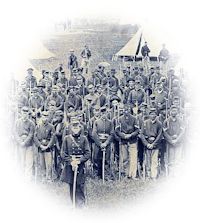Cumberland Gap, September 20th, 1863.
We are now in East Tennessee, one mile south of the famous Gap in the Cumberland Mountains.
When we left Crab Orchard we expected a fight here, as it was then in possession of the Rebels. I cannot say I am sorry they gave us possession without a struggle, for it is an ugly looking place, and “hard to take” without opposition. Our route, for the last sixty miles, has been over, around and among mountains, but this is the “back bone,” or main ridge, which rises in a direct line high above the isolated peaks on either side. The Gap is a slow, gradual ascent that rises to about half the altitude of the mountain on each side; is very crooked, and, at places, barely wide enough for a wagon to pass. At the summit it widens out into a small plain, or basin, containing about five acres, and shut in by a solid wall of rock two or three hundred feet in height. Near the center of the basin is a large spring of crystal water. Here are the fortifications, and a stronger position can hardly be imagined. One thousand men can hold it against any force that can be sent against it, so long as provisions and ammunition holds out. On the summit is a marble shaft that marks the corners of Virginia and Kentucky and the north line of Tennessee. By taking two steps I was in three different States. We are awaiting orders, and may remain over tomorrow. It is yet undecided whether we go to Knoxville or to Morristown, thirty miles above the former place, on the Richmond & New Orleans Railroad.



